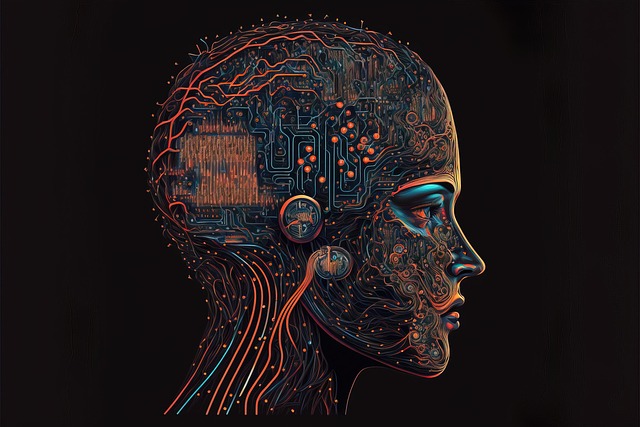The gaming industry has always been a pioneer in adopting cutting-edge technologies, and artificial intelligence (AI) is now at the forefront of this evolution. As of April 29, 2025, AI gaming innovation is transforming how games are designed, played, and experienced, creating immersive worlds that adapt to players in real time. From intelligent NPCs (non-player characters) to procedural content generation and personalized gameplay, AI is redefining interactive entertainment. This 1200-word blog post explores the latest advancements in AI gaming, their impact on the industry, and what lies ahead for gamers and developers alike.
The Rise of AI in Gaming
AI has been a part of gaming for decades, powering basic enemy behaviors in classics like Pac-Man (1980). However, recent advancements in machine learning, neural networks, and natural language processing have elevated AI’s role. Today’s AI can analyze vast datasets, learn from player actions, and generate dynamic content on the fly. This shift is driven by the growing demand for more immersive and replayable gaming experiences, as well as the computational power now available to developers.
The global gaming market, valued at over $200 billion in 2024, is increasingly investing in AI technologies. Companies like NVIDIA, Unity, and Epic Games are integrating AI tools into their engines, enabling developers to create smarter, more responsive games. Meanwhile, players benefit from richer storytelling, adaptive difficulty, and environments that feel alive. Let’s dive into the key areas where AI is making a significant impact.
Smarter NPCs and Dynamic Storytelling
One of the most noticeable advancements in AI gaming is the evolution of NPCs. Traditionally, NPCs followed scripted behaviors, making their actions predictable. Now, AI-driven NPCs can learn, adapt, and respond to players in more human-like ways. For example, in Baldur’s Gate 3 (2023), NPCs react dynamically to player choices, but newer AI models take this further by analyzing emotional cues and past interactions.
Imagine an RPG where an NPC remembers your betrayal from 20 hours earlier and changes their behavior accordingly, or a merchant adjusts prices based on your negotiation history. AI achieves this through reinforcement learning, where NPCs are trained on thousands of scenarios to develop nuanced responses. Natural language processing (NLP) also allows players to engage in open-ended conversations with NPCs, breaking free from predefined dialogue trees. Games like The Last Guardian (2016) hinted at this potential, but 2025’s titles are making it a reality.
Dynamic storytelling is another area where AI shines. Procedural narrative generation enables games to craft unique stories for each player. For instance, AI can analyze a player’s preferences—whether they favor combat, exploration, or diplomacy—and tailor the narrative accordingly. This technology is being used in experimental titles like AIDungeon*, which generates text-based adventures in real time, and is now expanding into AAA games with more structured frameworks.
Procedural Content Generation for Infinite Worlds
Procedural content generation (PCG) has been a game-changer, and AI is taking it to new heights. PCG allows developers to create vast, varied game worlds without manually designing every element. Games like No Man’s Sky (2016) used procedural algorithms to generate planets, but early iterations often felt repetitive. AI enhances PCG by ensuring diversity and coherence in generated content.
In 2025, AI-driven PCG creates landscapes, quests, and even entire cities that feel handcrafted. For example, an AI model can analyze real-world geography to generate realistic terrain, then populate it with flora and fauna that match the ecosystem. It can also design quests that align with the game’s lore, ensuring narrative consistency. This not only saves developers time but also offers players near-infinite replayability.
Minecraft’s Caves & Cliffs update (2021) showcased the potential of procedural generation, but AI takes it further by adapting to player behavior. If a player prefers underground exploration, the AI might generate more complex cave systems in their next playthrough. This adaptability ensures that no two gaming experiences are the same, keeping players engaged for longer.
Personalized Gameplay and Adaptive Difficulty
AI is also revolutionizing how games adapt to individual players. Adaptive difficulty systems use machine learning to analyze a player’s skill level and adjust the game in real time. If a player is struggling with a boss fight, the AI might reduce the enemy’s health or provide subtle hints. Conversely, if a player is breezing through, the AI can ramp up the challenge by introducing new mechanics or increasing enemy aggression.
This personalization extends beyond difficulty. AI can tailor gameplay elements like pacing, rewards, and even aesthetics to match a player’s preferences. For instance, if a player spends more time exploring than fighting, the AI might introduce more hidden treasures or lore-rich areas. In multiplayer games, AI ensures balanced matchmaking by analyzing playstyles and pairing players with complementary skills.
Games like Left 4 Dead (2008) pioneered adaptive difficulty with its “AI Director,” which adjusted enemy spawns based on player performance. Today’s AI systems are far more sophisticated, using deep learning to predict player behavior and create a seamless experience. This level of personalization makes games more accessible to newcomers while keeping veterans challenged.
AI in Game Development: Efficiency and Creativity
Beyond gameplay, AI is transforming the game development process itself. Creating a modern AAA game can take years and cost millions, but AI tools are streamlining workflows. For example, AI-powered art generation tools can produce concept art, textures, and 3D models in minutes, allowing artists to focus on refinement. Tools like MidJourney and DALL-E are being integrated into pipelines at studios like Ubisoft and EA.
AI also assists with bug testing and quality assurance. Machine learning models can simulate thousands of player interactions to identify glitches, balance issues, or exploits before release. This reduces development time and ensures a smoother launch. For indie developers with limited resources, AI levels the playing field by automating tasks that would otherwise require large teams.
Moreover, AI fosters creativity by suggesting design ideas. An AI trained on thousands of game mechanics can propose innovative features, such as a new combat system or puzzle mechanic. This collaborative approach between human developers and AI is leading to more experimental games, as seen in titles like Hades II (2024), which used AI to fine-tune its roguelike elements.
Ethical Concerns and Challenges
While AI gaming innovation offers immense potential, it also raises ethical concerns. One major issue is the risk of over-monetization. AI can analyze player behavior to maximize engagement, which some companies exploit by pushing microtransactions or addictive mechanics. For example, an AI might identify that a player is likely to spend money after a losing streak and prompt them with a “special offer.” This has sparked debates about player exploitation, especially among younger audiences.
Another concern is job displacement in the gaming industry. As AI automates tasks like art generation and coding, some fear it could reduce opportunities for human creatives. However, many argue that AI will instead shift roles, with developers focusing on higher-level design and storytelling while AI handles repetitive tasks.
Data privacy is also a concern. AI systems often collect player data to personalize experiences, but this raises questions about how that data is stored and used. Developers must prioritize transparency and consent to maintain player trust.
The Future of AI in Gaming
Looking ahead, AI gaming innovation shows no signs of slowing down. One exciting prospect is the integration of AI with virtual reality (VR) and augmented reality (AR). Imagine a VR game where AI generates a fully interactive world that responds to your every move, or an AR game that adapts to your physical environment in real time. Companies like Meta and Sony are already experimenting with these concepts, with prototypes expected by 2027.
Another frontier is AI-driven multiplayer experiences. AI could act as a “game master” in online games, dynamically creating challenges for groups of players. For example, in a cooperative game, the AI might introduce a surprise boss fight if the team is working too efficiently, keeping the experience fresh and unpredictable.
Finally, AI has the potential to democratize game development. With AI tools becoming more accessible, aspiring creators can build high-quality games without extensive technical expertise. Platforms like Roblox are already empowering user-generated content, and AI will further lower the barrier to entry.
Insights
AI gaming innovation is reshaping the industry, offering players more immersive, personalized, and dynamic experiences while empowering developers with powerful tools. From smarter NPCs and procedural worlds to adaptive gameplay and streamlined development, AI is unlocking new possibilities in interactive entertainment. However, as the technology advances, the industry must address ethical challenges to ensure that AI enhances gaming without compromising fairness or creativity.
As of April 29, 2025, the future of AI in gaming looks brighter than ever. Whether you’re a casual player or a seasoned developer, the impact of AI is undeniable. The next generation of games will not only entertain but also adapt, learn, and grow alongside us, heralding a new era of interactive storytelling. So, grab your controller—or VR headset—and step into a world where AI makes every adventure truly your own.



